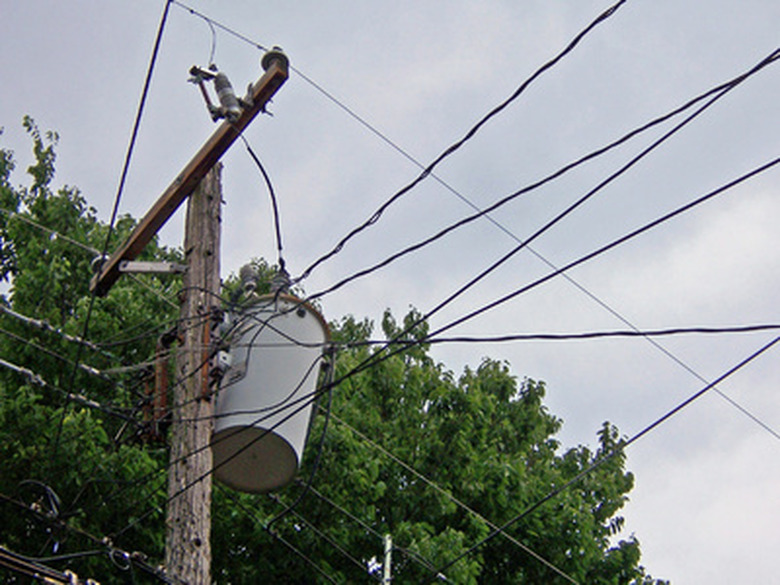How To Determine The Primary & Secondary Of A Transformer
A transformer conveys electricity from a powered electrical circuit through a magnet to another, secondary circuit that otherwise wouldn't have electricity running through it. Both circuits coil around the magnetic part of the transformer. The number of turns in the coils and voltage and current of the energized circuit determine the current and voltage of the secondary.
Step 1
Determine the ratio of the voltage drops through the primary and secondary coils from the ratio of the turns in the circuits around the transformer's magnetizable material. Denote the turns of the energized circuit's coil by n1 and the secondary coil's by n2. Denote the voltage drop through the energized circuit's coil by V1 and the voltage drop through the secondary coil by V2. Then n1/n2 = V1/V2. So if you know the ratio of coils and one of the voltage drops, you'll know the other one as well.
For example, if the energized circuit's coil has 200 turns around the transformer's magnetizable material, and the other coil has 100 turns, and the voltage drop through the first coil is 10 volts, then the voltage drop through the secondary coil is 100 / 200 * 10 = 5 volts.
Step 2
Determine the ratio of the current through the coils by the reciprocal ratio of the coil turns. In other words, n1/n2 = i2/i1, where i1 and i2 are the currents through the two coils.
Continuing with the above example, if the current through the energized coil is 5 amps, then the current through the secondary coil is 200/100 * 5 = 10 amps.
Step 3
Determine the ratio of the primary and secondary voltage drops through the coils by the reciprocal ratio of the currents. In other words, i1/i2 = V2/V1.
For example, if the current and voltage drop through the secondary coil is 3 amps and 10 volts, and the voltage drop through the primary coil is 5 volts, then the current through the primary coil is 10/5 * 3 = 6 amps. So the secondary has less voltage and more current.
TL;DR (Too Long; Didn't Read)
These equations follow from the conservation of charge and the conversation of energy. See the Oregon site below.
References
- "Fundamentals of Physics"; David Halliday and Robert Resnick; 1992
- University of Oregon: Conservation of Energy Through a Transformer
Cite This Article
MLA
Dohrman, Paul. "How To Determine The Primary & Secondary Of A Transformer" sciencing.com, https://www.sciencing.com/determine-primary-secondary-transformer-6117755/. 24 April 2017.
APA
Dohrman, Paul. (2017, April 24). How To Determine The Primary & Secondary Of A Transformer. sciencing.com. Retrieved from https://www.sciencing.com/determine-primary-secondary-transformer-6117755/
Chicago
Dohrman, Paul. How To Determine The Primary & Secondary Of A Transformer last modified March 24, 2022. https://www.sciencing.com/determine-primary-secondary-transformer-6117755/
